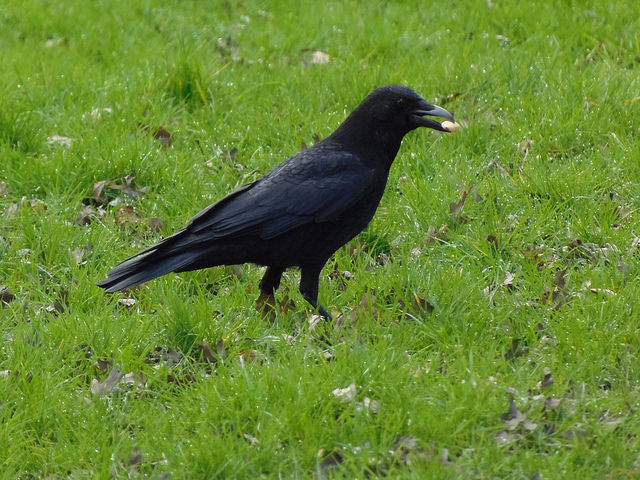Corvids could save forests from the effects of climate change
Ars Technica » Scientific Method 2016-02-08

A raven with a large seed, about to bury it in a field. (credit: Callum Hoare / Flickr)
To you, crows and jays might be noisy, obnoxious birds who eat garbage. But for large-seeded trees like pines, hickories, oaks, and chestnuts, they could be life-saving heroes. That's because these birds can actually relocate forests that are threatened by changing climates and habitat loss.
In a new paper published in ornithology journal The Condor, a group of US scientists describe how corvids' unique food-gathering strategies have transformed forests around the world. Now, environmental scientists are actively using the animals as part of their reforestation strategies.
Scatter-hoarding
Corvids, a family of birds that includes crows, ravens, jays, magpies, and nutcrackers, are called scatter-hoarders. They roam large territories to scavenge seeds, fruit, and even meat, storing as many morsels as possible to eat later. That's the "hoard" part. But they don't have one giant stash full of loot the way squirrels do. Instead, they hide each treat in a separate place, occasionally moving it around to prevent other animals from finding it. That's the "scatter" part. Corvids are incredibly intelligent, with excellent visual memory, and scrub jays can remember up to 200 different cache locations at any given time.